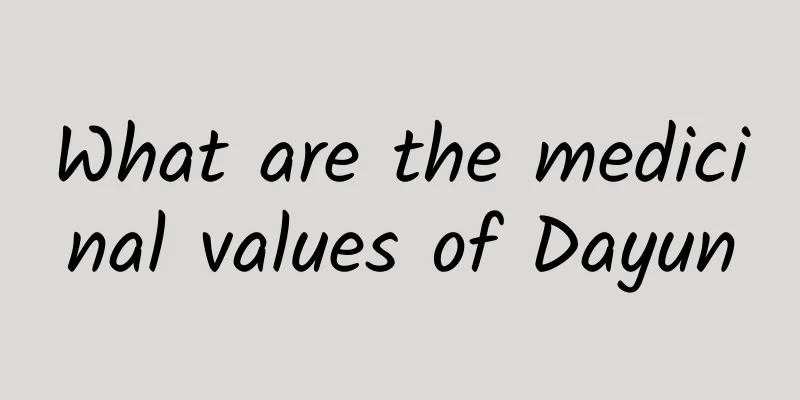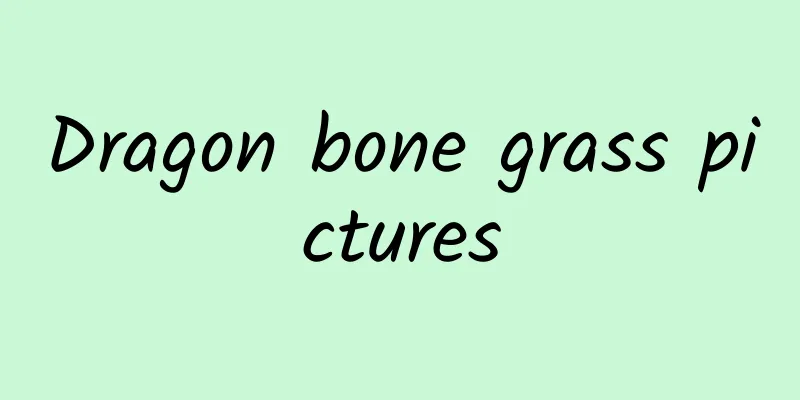The efficacy and function of five-color plum leaves

|
Five-color plum leaves are a common Chinese medicinal material with great health-care effects. They also have certain effects on some diseases. We need to choose according to our own needs. Many people in life don’t know much about the five-color plum leaves. Let’s analyze the five-color plum leaves below. [Other names] Stinky golden phoenix leaf, hairy god flower leaf, five-color flower leaf [Source] Medicinal material source: The leaves or young branches of Lantana camara of the Verbenaceae family. [Original form] Lantana, an upright or creeping shrub. The plant has a foul smell, is 1-2m tall, and sometimes vine-like, up to 4m long. The stems and branches are square, with rough hairs, often with downward-curved hooked thorns or without thorns. Simple leaves are opposite; petiole is about 1cm long; leaf blade is ovate to ovate-oblong, 3-9cm long, 1.5-5cm wide, base is cuneate or cordate, margin has blunt teeth, tip is acuminate or acute, surface has rough wrinkles and short soft hairs, back has small bristles, lateral veins are about 5 pairs. The capitula is axillary, with a diameter of 1.5-2.5cm; the inflorescence is vigorous and longer than the stalk; the bracts are lanceolate, 1-3 times longer than the calyx, with short soft hairs; the calyx is tubular, with very short teeth at the tip; the corolla is yellow, orange, pink to dark red, the corolla tube is about 1cm long, with fine short hairs on both sides, and a diameter of 4-6cm; there are 4 stamens, and the fruit inside is spherical, purple-black when ripe. Blooms all year round. [Habitat distribution] Ecological environment: It often grows on seaside beaches, roadsides and open areas at an altitude of 80-1500m. It is cultivated in gardens in our country. There are escapees in Fujian, Taiwan, Guangdong and Guangxi. : : : : : : : : : : : : : : : [Pharmacological action] 1. Antipyretic, anti-tumor and other effects The lantana ene A contained in the leaves has an antipyretic effect; the verbascoside contained in the leaves has antimicrobial, immunosuppressive and anti-tumor effects in vitro, and is also a rat brain protein kinase C inhibitor. The bioalkali it contains can lower blood pressure in dogs, speed up and deepen their breathing, and cause tremors; it can excite the intestines of rats and inhibit uterine activity. [Toxicity] Prunus armeniaca is one of the top ten poisonous weeds in the world. Feeding calves, sheep, buffaloes and other dairy animals with five-color plum leaves may cause chronic poisoning and death. The toxic components lantane A and B isolated from the leaves produce toxic doses of 65-75 mg/kg and 200-300 mg/kg when administered orally to sheep, respectively. The content of lantane A in the leaves is high, so lantane B does not seem to be important for ruminant poisoning. Giving 6g/kg of leaves or 125mg/kg of toxin to rabbits can cause jaundice, anorexia and constipation, increase in plasma unconjugated bilirubin, especially conjugated bilirubin, and increase in the activities of aspartate aminotransferase and acid phosphatase. Light microscopic pathological examination showed cloudy swelling of hepatocytes, hilar fibrosis, dilation and proliferation of bile ducts; proliferation of glomerular interstitial cells, degeneration of renal tubules, cloudy swelling of renal tubular endothelial cells, and shrunken nuclei. When guinea pigs were gavageally administered 125 mg/kg of the toxin or orally administered leaf powder, they developed jaundice, photosensitization, liver and kidney damage, hyperbilirubinemia, hyperchlorophyllemia, a significant increase in plasma urea nitrogen content, and significantly increased activities of acid phosphatase, aspartate aminotransferase, lactate dehydrogenase, and glutamate dehydrogenase; the activity of xanthine oxidase in the liver and kidneys was increased within 48 hours. The content of liver protein and DNA in poisoned guinea pigs decreased, the lipid content increased, the activity of liver mitochondrial oxidase was significantly increased, the activity of microsomal enzymes related to drug metabolism was reduced, the activity of cytosolic glutathione-S-transferase was also reduced, and lysosomal enzymes leaked. Poisoning by safflower in livestock can be treated with oral administration of soap clay or activated charcoal as an antidote. 【Nature and flavor】 Spicy; bitter; cool; non-toxic 【Functions and indications】 Clears away heat and detoxifies; dispels wind and relieves itching. Mainly used for carbuncle, swelling, poisonous sore, eczema, scabies, dermatitis, traumatic injury [Usage and Dosage] For oral administration: decoct in water, 15-30g; or mash the juice and mix with wine. For external use: take appropriate amount, decoct in water and wash; or mash and apply; or squeeze the juice and apply. 【Note】 Avoid excessive oral administration. Pregnant women and the weak should not take it. 【Excerpt】 Chinese Materia Medica Through the introduction of the effects and functions of five-color plum leaves, everyone knows its magic. In fact, there are many seemingly ordinary people or things in life that contain power that we cannot imagine. Now that everyone knows the magical therapeutic effects and functions of the five-color plum leaves, you can try it to test whether it is effective. |
<<: The efficacy and function of red oxtail seven
>>: The efficacy and role of Dafa
Recommend
The efficacy and function of mandarin fish gall
Mandarin fish gallbladder is a commonly used medi...
She joined the Party at the age of 102 and died at the age of 103. Her story is admirable!
Early 1960s The movie "The Red Detachment of...
Eating carp, celebrating silkworms...there are so many interesting folk customs on New Year's Day!
New Year's Day is coming. As a Chinese festiv...
Can wolfberry improve sexual function?
As many industries in modern society are facing h...
What are the effects and functions of licorice root?
Roasted licorice is a kind of traditional Chinese...
The efficacy and function of winged chrysanthemum
Winged Caraway, also known as mountain lettuce, b...
What are the medicinal values of raspberries?
Traditional Chinese medicine is a method of treat...
The efficacy and function of gray grass
Gray sedge is commonly used as a medicinal ingred...
Should I replace my power bank after six years of use? What is its service life? How can I check it?
Editor: Sunny Morning Recently, a blogger posted ...
Taboos of drinking chrysanthemum water
Fetal chrysanthemum has pharmacological effects a...
For every hour of sitting, the average life span is shortened by 22 minutes? The harm of long-term sitting is more than just back pain!
"For every hour of sitting, the average life...
There is more space junk to clean up, what should we do?
Recently, the European Space Agency announced tha...
A beverage loved by the elders is quietly trying to please the young (not tea)
Do you drink alcohol regularly? When I was a chil...
Can locust plagues be avoided by pinching the locusts' "nose"?
Produced by: Science Popularization China Author:...









